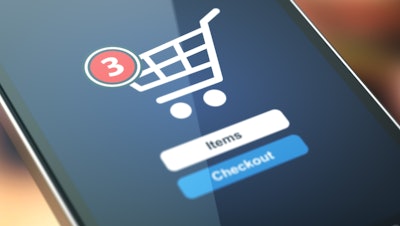
B2B businesses have always relied on their ability to provide accessible and effective solutions for industry-specific needs. Over the past few years, however, the range and scope of these solutions have shifted.
As customer expectations around accessibility and effectiveness continue to change, so too must B2B solutions. In many cases, this includes revisiting and revising a poorly implemented digital buying experience and providing clients the solutions they now expect.
Online capabilities have become much more common and expected for work, school and, especially, shopping. However, the initial shift to digital left much to be desired regarding the digital buying experience. This was particularly true for B2B manufacturers as their former methods of communication focused on in-person channels that enabled groups to walk potential customers through the purchasing process. This reliance, which was formerly a strength, has been transformed into a liability based on recent trends (demographic, pandemic, etc.).
Fortunately, the tides have shifted yet again. B2B distributors have learned what does and doesn’t work. Many manufacturers are now wiser and more in tune with their consumers’ wants and needs. Some have even begun implementing a simple digital customer experience strategy.
This allows a higher likelihood of successfully achieving B2B digital transformation. B2B manufacturers can now take everything they’ve learned in the past few years, revisit hastily implemented digital solutions, and use feedback to improve their digital buying experience as a whole.
Challenges and Solutions to Offering an Effective Digital Buying Experience
B2B manufacturers and distributors know that a smooth, solution-oriented, and straightforward customer experience can ultimately increase revenue and profitability. However, effective digital transformation must rely on adaptability. To understand what solutions you must implement for an effective B2B customer experience, you must take a step back and create a road map for success. This means doing the difficult but necessary work of performing assessments of current processes and platforms to establish their effectiveness.
Only after this crucial step is completed can you efficiently and confidently execute a B2B digital transformation. At this point, you can use the solutions below to help navigate any potential challenges you may face when improving your digital buying experience.
Challenge 1: Lack of features
Your digital buying platform does not have the features that customers and internal team members need. Customers, partners and sales reps are asking for more flexibility and options.
Solution 1: Use feedback to determine priorities
Begin by sending out customer surveys to gain a solid understanding of pain points and areas for improvement. Using the opinions and reviews of customers can help shape your sales reps and their processes moving forward. By conducting surveys and workshops, you can ensure that your company can move forward in a digital atmosphere and find success in the future.
Challenge 2: Lack of adoption
Customers, partners and sales reps aren’t using your buying platform for many reasons — it feels outdated, it isn’t user-friendly, or processes are slow.
Solution 2: Conduct assessments and set KPIs
Determining the root cause of adoption is usually associated with usability, awareness and training. For example, customers may not be using your platform because it is hard to operate, they may not know it exists, or they need training to better understand its features. By executing a digital adoption assessment, you will be able to quantify which area your digital platform needs the most help with, set realistic future KPIs, and prioritize the components that must change to bring about the necessary B2B digital transformation.
Challenge 3: Inability to scale
Only certain business units or product lines have been onboarded, or you see performance slowdowns and too many manual processes.
Solution 3: Evaluate data and address issues head-on
Scalability challenges can have several root causes. Evaluating data and integration points can often uncover areas that need to be addressed. A platform health check of your current system by an outside party may also identify potential optimization paths. You can also look at the operating model and organizational structure of the first-generation platform to determine what process changes should be implemented to optimize scalability.
Leverage B2B Digital Transformation Strategically Moving Forward
Now is the time to use what you already know about what B2B buyers expect in the sales process and make the digital buying experience smooth and straightforward. It is essential to continue leveraging digital tools rather than merely reacting to the changes in the digital atmosphere.
Continue to meet your goals and increase B2B distribution by conducting usability workshops or sending out customer surveys. Using the opinions and reviews of customers can help shape your sales reps and their processes moving forward. By conducting surveys and workshops, you can ensure that your company can move forward in a digital atmosphere, enhance the B2B digital buying experience, and find success in the future.
Joe Harouni is the connected commerce practice lead at Avionos.























